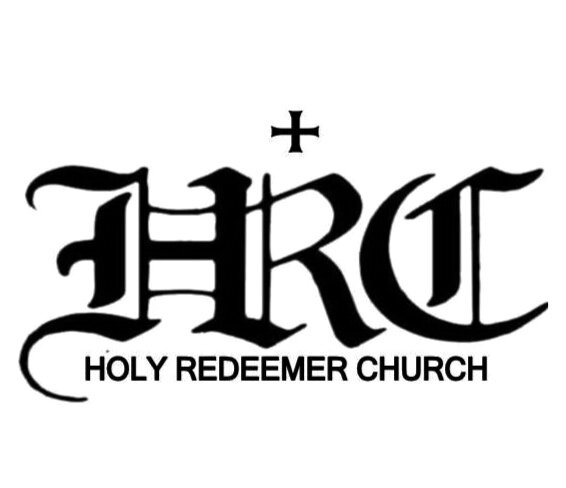What is the "Sign of Peace"?
The Sign of Peace is a rich and meaningful rite with deep biblical and historical roots. It is more than a polite exchange-it is a profound expression of Christian love, reconciliation, and unity. Positioned just before the reception of the Eucharist, it reminds us that true communion with Christ must be accompanied by peace with one another. In extending peace, we make visible the invisible reality of the Church: a people reconciled through Christ, bound together in love, and called to bring peace to the world.
1. The origin of the Sign of Peace is deeply rooted in Scripture and the early Christian community's liturgical practices. Several key biblical passages form the foundation of this gesture:
In Matthew 5:23-24, Jesus instructs:
"Therefore, if you are offering your gift at the altar and there remember that your
brother or sister has something against you, leave your gift there before the altar. First go and be reconciled to them; then come and offer your gift."
This indicates the necessity of reconciliation and peace before offering worship to
God.
In the Epistles, St. Paul and other writers frequently urge believers to "greet one
another with a holy kiss" (cf. Romans 16:16, 1 Corinthians 16:20, 2 Corinthians 13:12, 1 Peter 5:14). This "holy kiss" was a gesture of mutual charity, unity, and
peace within the early Christian communities.
From the beginning, peace was central to the Christian message. Jesus, the "Prince of Peace" (Isaiah 9:6), greeted his disciples after the Resurrection with, "Peace be with you" (John 20:19). Early Christian worship incorporated this peace as a real expression of communion and mutual forgiveness.
2. Development in the Early Church
In the first few centuries of Christianity, the Kiss of Peace (Pax) was a regular and
prominent part of the Eucharistic celebration. It symbolized reconciliation, unity, and charity among the faithful, especially before receiving Holy Communion.
According to St. Justin Martyr (2nd century), in his First Apology, the community shared the kiss of peace as part of the liturgy, likely before the Eucharistic Prayer. By the 4th century, the placement of the Kiss of Peace in the liturgy varied by region, but the theological meaning remained consistent: it was a preparation for the reception of the Eucharist, emphasizing peace among the members of the Body of Christ.
3. Medieval Liturgical Practice
As the liturgy became more formalized in the Medieval West, the Sign of Peace became restricted, often limited to the clergy. In many cases, a "pax board" or "osculatorium"— an object symbolizing peace-was kissed and passed among the ministers and sometimes passed to the laity.
While the theological meaning remained, the personal and communal expression of peace diminished in practice, becoming a more symbolic and often clerically contained gesture.
4. Liturgical Reform and the Second Vatican Council
The Second Vatican Council (1962-1965) marked a significant restoration of ancient liturgical elements, aiming to foster active participation by the faithful. In its Constitution on the Sacred Liturgy, Sacrosanctum Concilium, the Council encouraged the recovery of gestures and rites that expressed the unity of the Church.
As part of the reform of the Roman Rite, the Sign of Peace was reintroduced for the
whole assembly, not just the clergy. It was placed after the Lord's Prayer and before Communion, highlighting the link between reconciliation and Eucharistic communion.
The General Instruction of the Roman Missal (GIRM) explains: "The Rite of Peace
follows. By it the Church asks for peace and unity for herself and for the whole human family, and the faithful express to each other their ecclesial communion and mutual charity before communicating in the Sacrament." (GIRM 82)
The exchange of peace, therefore, prepares the community for Communion, reinforcing the spiritual unity required to receive the Body and Blood of Christ worthily.
5. Theological Meaning
The Sign of Peace is not simply a courteous social gesture. It is a liturgical and sacramental act that expresses several profound truths:
Communion in Christ: By extending peace to one another, the faithful recognize
their union as members of the one Body of Christ.
Reconciliation: The act recalls the need to forgive and be forgiven, fulfilling Christ's command to be reconciled before approaching the altar.
The Peace of Christ: The gesture manifests the peace that Christ gives a peace not as the world gives (John 14:27), but one rooted in the resurrection and the Kingdom of God.
A Preparation for the Eucharist: Just as Christ offers peace to the disciples before
instituting the Eucharist (at the Last Supper), the Church maintains peace as a prerequisite for true communion.
6. Contemporary Practice
Today, the Sign of Peace typically involves a handshake, bow, embrace, or verbal greeting like "Peace be with you." Cultural and local customs often influence how it is expressed.
The rubrics suggest the exchange be made "in a sober manner" and not disrupt the liturgical flow. The celebrant first offers peace to the congregation-*"The peace of the Lord be with you always" "—*to which the people respond, "And with your spirit." Then the deacon or priest invites the faithful to share peace with one another. The Vatican, in recent years, has reaffirmed the importance of this gesture while cautioning against its excessive or overly informal expression, encouraging that it remains dignified, focused, and spiritually meaningful.

